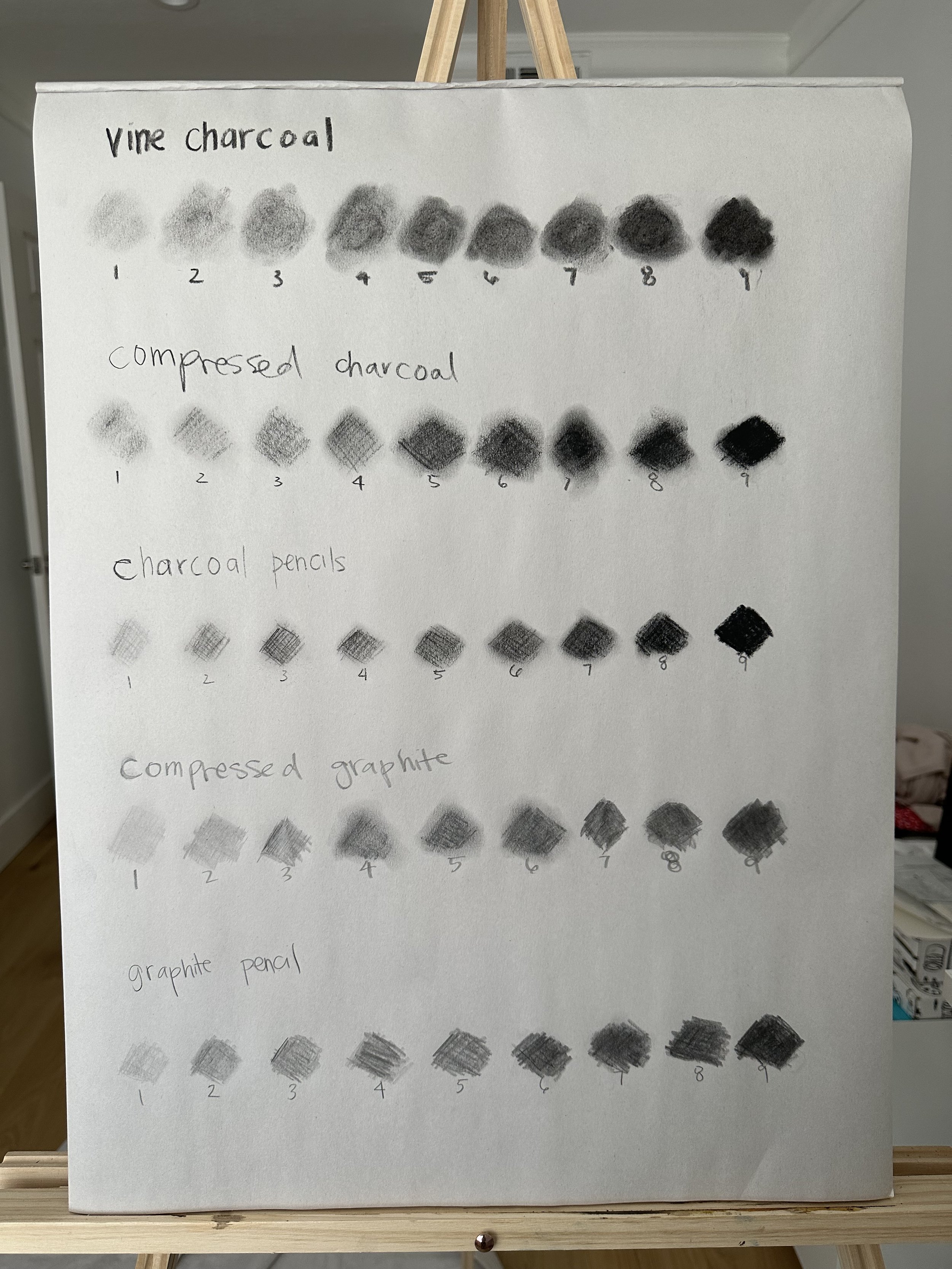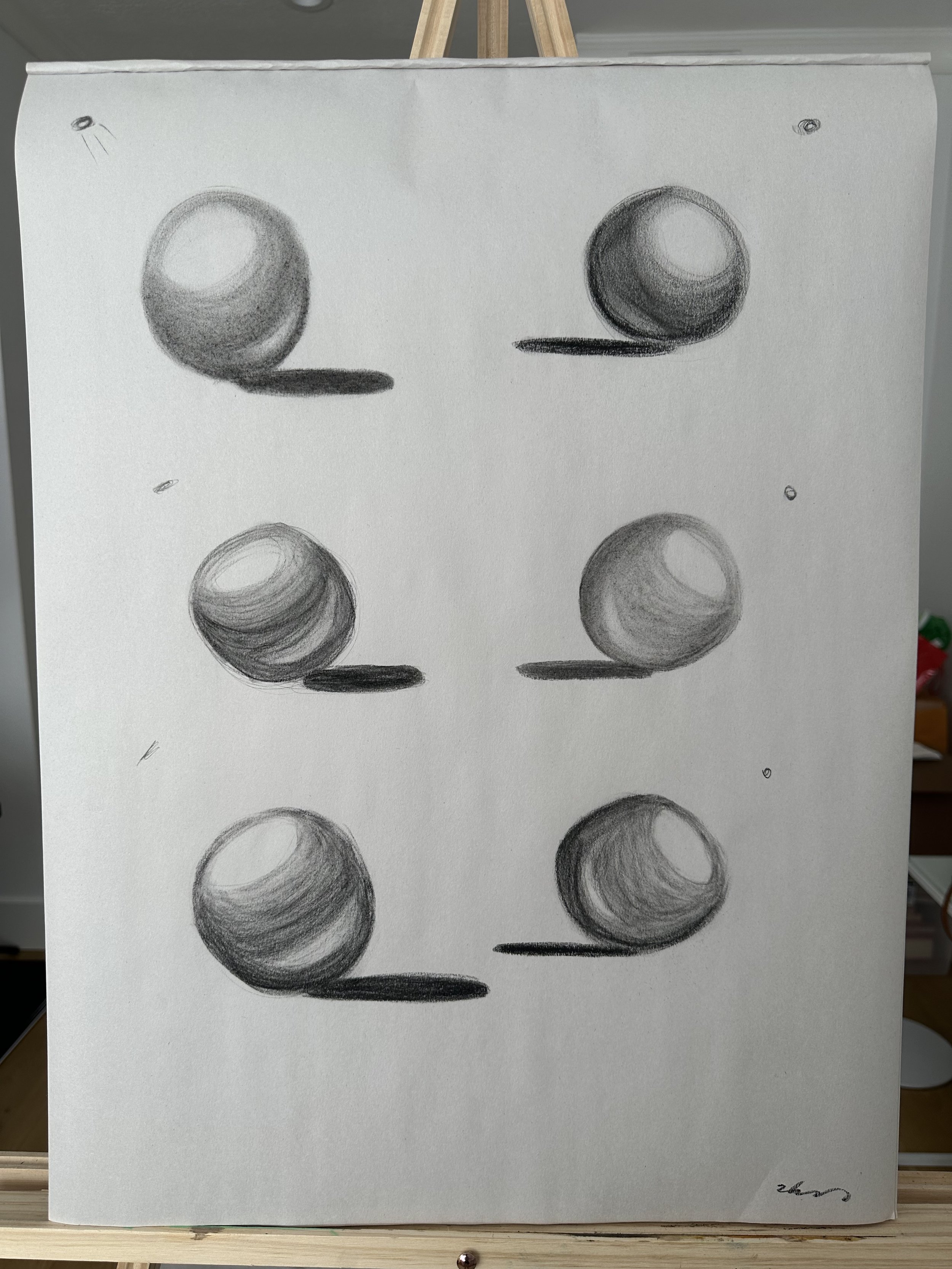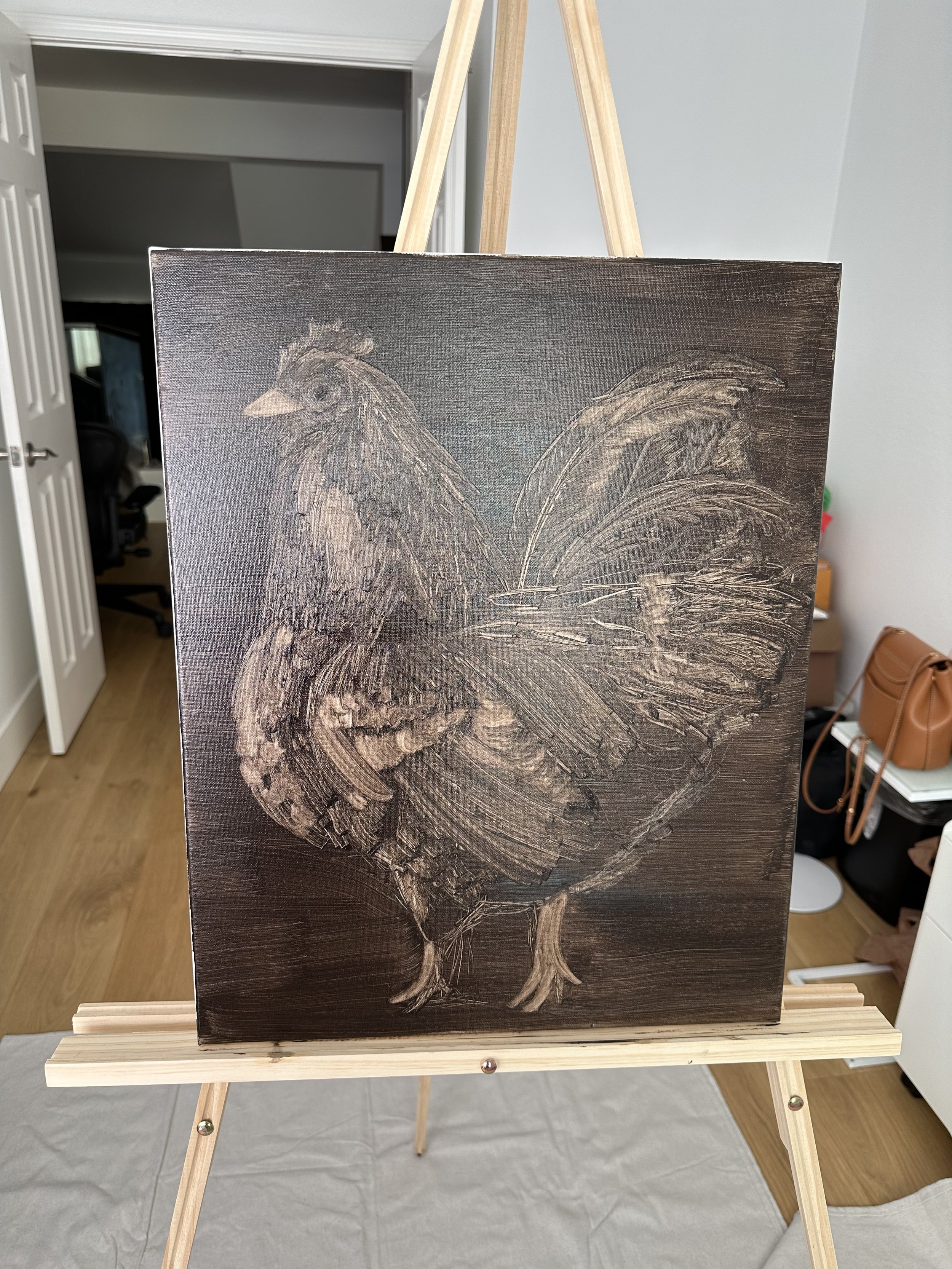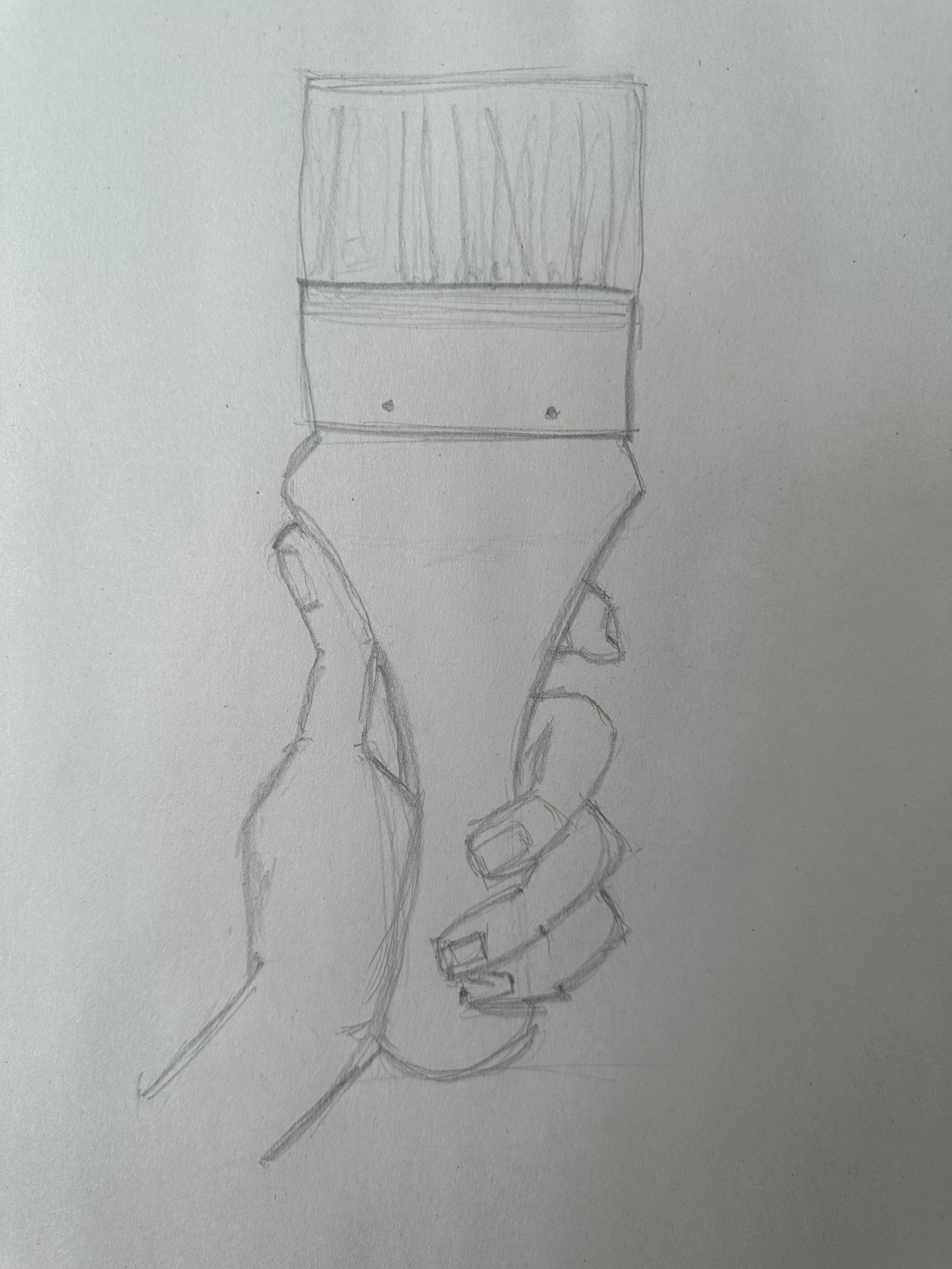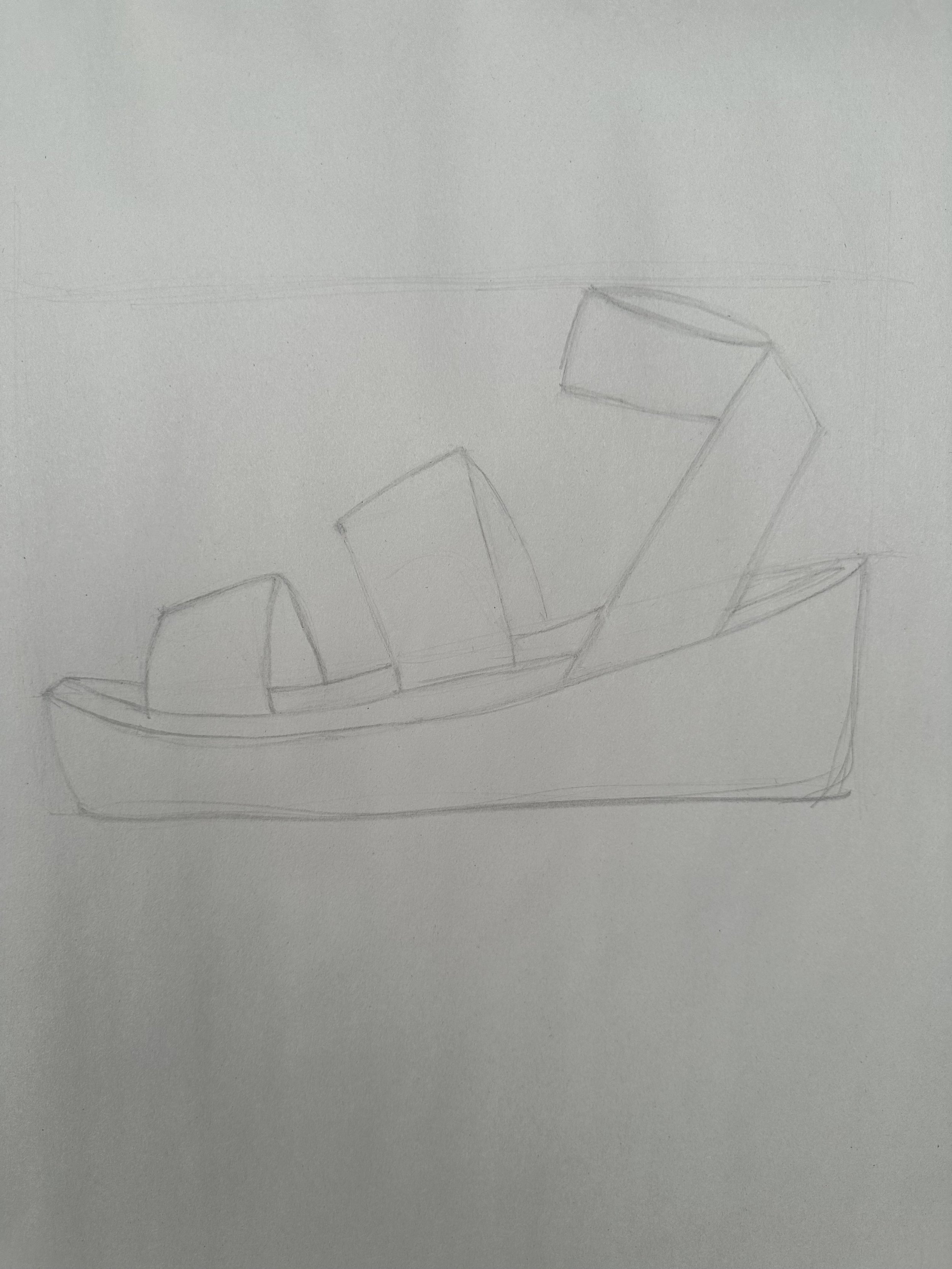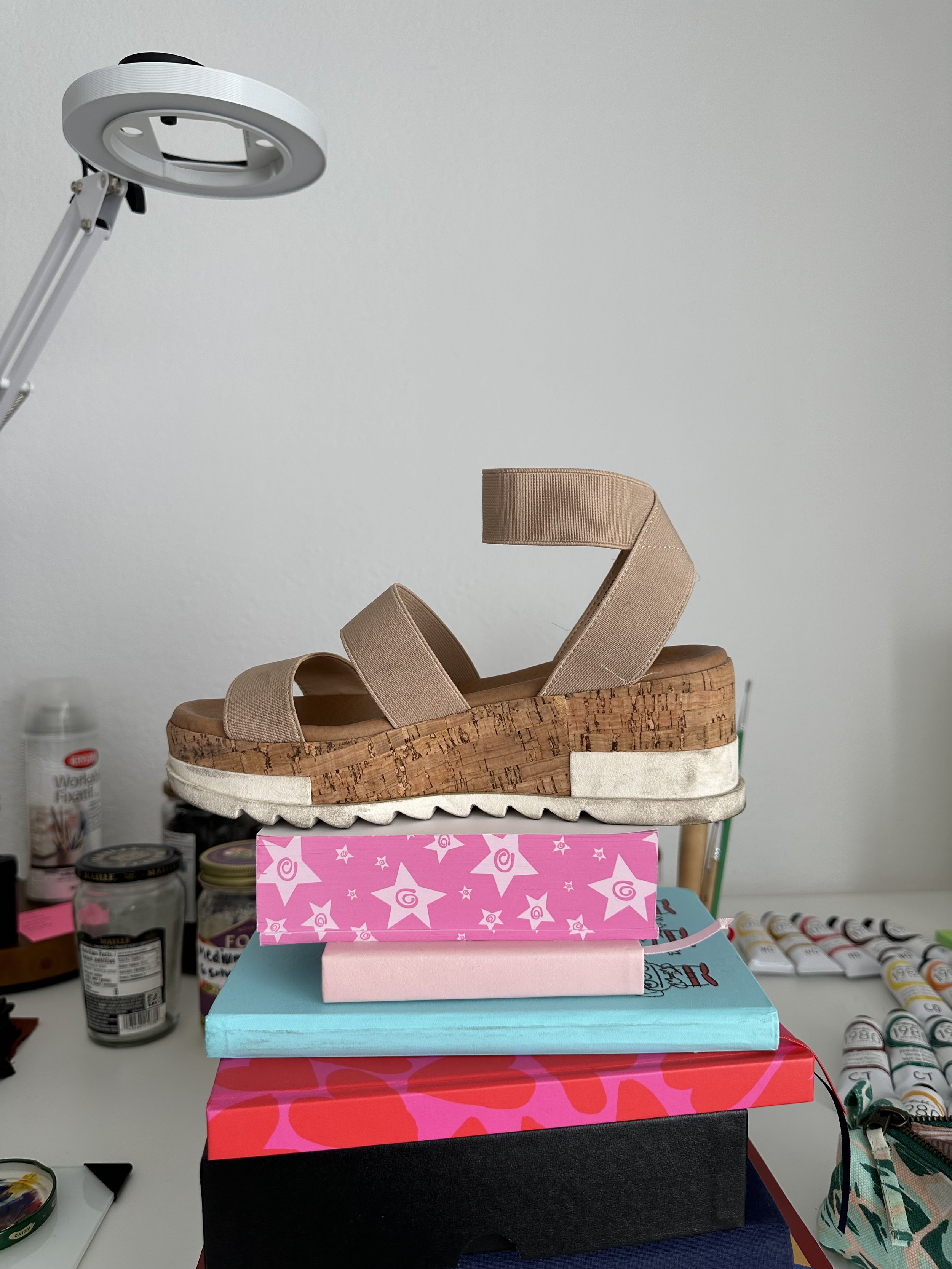Milan Art Institute Mastery Program Review: Week 5
This week is a break week. It looks like the program has a break week every fifth week or so, which is awesome. The break week is also the time to finish up any unfinished projects or to do any catch up work.
I feel like I’ve learned a lot in the first four weeks of lessons and have had a lot of practice with all the assignments. It’s been fun and also great to have a little bit of a breather. Hope y’all have a good week and see ya next time!
Introduction to oil painting
Proportion
Color theory
Shading and value
Oil painting
Graphite drawing
Plane shifts
Charcoal still life
Flesh tones and complementary colors
Charcoal still life
Alla prima painting
Milan Art Institute Mastery Program Review: Week 4
Drawing from Life
This lesson is about setting up our compositions for the week. We talk about the Rule of Thirds where if we have the image broken up into nine boxes, we want the focal points of the composition to be where the lines intersect. We also go over other tips like to avoid awkward angles or precarious object placements, and don’t place the objects all “facing” in the same direction. And don’t put the objects too far apart! It does seem a little bit of a Goldilocks situation - not too far, not too close, just right.
Still Life in Charcoal
While I was searching for objects for my still life composition, I noticed a discrepancy between the actual objects in my life and the objects I would want to put into a still life painting. The class gave some suggestions like fruits and vegetables, toys, and vases. I’m thinking I want fun objects - things that would be fun to paint and fun to look at.
Then funnily enough, it turns out, I didn’t really have any of those objects on hand for this first assignment. So I did find an empty wine bottle, which I shamelessly dug out of the recycling bin, an LA Chargers football helmet from the LA fair, my sketchbook, my copy of The Art Spirit by Robert Henri that I haven’t read yet, and a head of garlic from the pantry.
This whole experience reminded me of those Instagram versus reality posts. The difference between what sells, what people want to look at, and what really exists. When I think about old school still life paintings like this Dutch still life, I wonder if that painting was aspirational or reality. Did people’s tables back in the day really look like that? Or is that the food they wish they were able to eat regularly? Did they buy the objects in the painting specifically for the painting? And then, what does it mean if there is a large gap between reality and aspiration?
Random: I happened to stumble upon this fun and informative article on the history of fish in still life. I really liked the paintings featured in the article and it’s giving me some inspiration for future works.
Something else I learned: to clean the blending stumps, use sandpaper. I basically scrape the dirty parts of the stump on the sandpaper and fashion the tip into a point.
Now, to start on the charcoal drawing, first we make a ground using the jumbo willow charcoal. Next sketch in the objects, subtract highlights, and add in darker values.
Final version of my still life in charcoal
Primary Palette Still Life
First, we want to prepare the canvases by applying a neutral grey background. To make neutral grey I followed the recipe in this post by Francisco Silva using Ultramarine Blue, Burnt Sienna, and Titanium White. Then starting on painting the objects by working dark to light, ending with highlights.
The three still life paintings this week are all alla prima paintings. “Alla prima” is Italian for “at first attempt” and is a painting technique where layers of wet paint are laid down on top of previously applied layers of wet paint (source). We are also using a limited palette of three primary colors to make any additional colors needed.
Applying the grey background
My first alla prima painting
Primary Palette Still Life with Two Additional Colors
This is the same assignment as the other primary palette one except with adding two more colors. I also tried to pick objects that were a bit more colorful so they would be more fun to paint.
Choosing more colorful objects this time
2nd alla prima painting
Still Life from Photo
This assignment is basically the same as the first still life charcoal one except this time we are using a source photo instead of real objects. I specifically chose this source photo with the glasses of water in order to practice reflections since reflections were something I struggled with in week two.
Setting up the ground
The initial sketch and starting to shade in the egg
Work in progress
The final charcoal drawing
Primary Palette Still Life with Another Two Additional Colors
This is the third alla prima painting and the final assignment of the week. I tried to pick objects that would be fun to paint. I really enjoyed painting the little pink top on the succulent and the peacock Christmas ornament.
Alla prima still life objects
My third alla prima painting
Milan Art Institute Mastery Program Review: Week 3
Plane Shifts
A plane shift is where two planes meet, creating a corner or point in the contour. This week we’re working on a cardboard box still life in charcoal for the drawing class. We need to find a cardboard box, this is what we’ll use to practice the plane shifts, and then put some objects in it. I chose a stuffed animal I got for Christmas one year from my aunt and then one of the tennis balls lying around the house.
My still life for this assignment
We start by making a ground using willow charcoal. So, I learned willow charcoal will only go up to a value of 5. (If it seems darker, it’s just the pigment laying on top of the paper.) Remember the value scale from last week? Values range from 1-9 with 1 being the lightest and 9 being the darkest. Yep, so 5, right in the middle. How convenient! This makes it easy for the next steps - initial sketch, subtract the highlights, add in the darker shades, and violà!
Initial ground in willow charcoal
Subtract the highlights
Add in the darker shades with compressed charcoal
We also learned about chiaroscuro which is a strong contrast between light and dark. An example in my drawing above, look at the left side flap of the cardboard box. To the left of the flap is middle grey 5, then comes the edge of the box which was in shadow. Then a light highlight, and finally a darker shadow on the flap. So it is like alternating light and dark to integrate the foreground object into the background.
Monster Portrait
We’re using three paints here: transparent earth yellow, alizarin crimson, and mars black. These should all be cool colors. Unfortunately, I didn’t have mars black or any other cool toned black, so I ended up using van dyke brown, which is a warm transparent. Hopefully things will still turn out okay!
We’re working light to dark and blocking in the light, medium, and dark areas using the corresponding colors. Yellow for light, crimson for medium, black for dark. Then we pull out highlights with the subtraction tool making sure the head tilt and the eye to nose measurement is correct.
So far, it is looking pretty monstrous. I’m hoping the painting is just at the ugly stage right now and it’ll get better as we go along. Fingers crossed.
Subtraction step for the monster portrait, source photo to the left
Flesh Tones and Complements
So, first, I completely adjusted her and made her head bigger. I kinda feel like I placed her head too high and the painting would look better with more space at the top. In this layer, we’re starting with the filbert 30 and blocking in the larger areas of color along the plane shifts. To make the flesh tones, we mix two complementary colors together. Complements are red-green, orange-blue, and yellow-violet.
Second layer of paint on the monster portrait
Painting Plane Shifts
So here, our task is to finish up the painting, with each plane shift as its own distinct color. The woman’s face in the source photo had pretty distinct highlights and shadows with many orange and red tones. Looking at my finished painting below, she kind of reminds me of the Titans from Attack on Titan. All the different blocks of color for the plane shifts feel similar to the exposed muscles and ligaments on the Titans’ faces.
Monster Portrait, final
Blocking in a Charcoal Portrait
This drawing is like a combo of the other two assignments. We use similar methods to before. First doing a loose drawing of the subject with emphasis on the dark areas to subtract out of. Then work on subtracting out highlights, then adding darker areas.
I chose the source photo of Audrey Hepburn. She’s my mom’s favorite actress and we used to watch her movies (Sabrina, Charade, How to Steal a Million) when I was a kid. It is kind of funny, the ones we watched together weren’t even Hepburn’s most famous ones like Breakfast at Tiffany’s or Roman Holiday.
Anyways, I think I pressed too hard with the charcoal on my initial drawing. There’s some marks on her face that would not erase out. Good lesson learned here, be more gentle. I am very pleased with how her hair came out.
Charcoal drawing of Audrey Hepburn
Materials used
Milan Art Institute Mastery Program Review: Week 2
Shading and Value Scale
So for week 2, in our drawing class, we are learning about shading and values. The value scale goes from 1-9 with 1-3 being highlights, 4-6 midtones, and 7-9 would be the darkest shades. 5 is the middle grey.
For the value scale assignment, I created scales using different types of charcoal and graphite. I also tried practicing cross-hatching to make the scales.
Vine charcoal felt like it was the easiest to use and the most forgiving, which is why it is recommended for beginners. With the vine, it’s very soft and I could take a lot off the paper by rubbing with my finger, so it was easy to erase when I made mistakes. Vine charcoal is made from burning grapevines and is slightly harder than willow charcoal, made from willow branches (source). Initially I was confused between the two, but they are different.
Charcoals were also a bit more dusty in my opinion. Softer and easier to get a very dark shade. Graphite is basically pencil lead. The compressed graphite felt like holding a thick stick of pencil lead and the graphite pencils were just regular pencils.
Shading and value scales in different types of charcoal and graphite
Radiant Underpainting
For week 2’s painting part of the class, we are using the Gamblin Radiant colors. The first step of the process is the underpainting. Here we are focusing on just the colors, not the values for this assignment. We want to block in the basic colors from the source photo. Since this is a landscape, we have an atmospheric or clamshell perspective. So we want to use cool colors on the horizon line, this is the part of the painting that is receding backwards. We want to use warm colors closer to the top and the bottom of the painting as this is the area that is coming forward or approaching the viewer.
Radiant underpainting
Spheres Shading and Value Drawing
Now back to drawing class. The drawing and painting assignments typically alternate. I thought this was nice and I believe the purpose is to allow enough time for the painting to dry. I also like alternative activities as it gives some variety. For the spheres assignment, we draw several different spheres with different light sources. I used the different charcoals I had also - vine, compressed, and pencil.
Spheres charcoal drawing
On each sphere, there are several areas we want to make sure to include. The first is the highlight, which is the lightest portion at the top of the sphere were the light is hitting it. The core shadow is the shadow around the body and bottom of the sphere. The reflective light is a highlight within the core shadow, above the cast shadow, which is the shadow the sphere casts on the ground or surface the sphere is sitting on.
The other graphite drawing assignment is the three pears. There are three pairs sitting in a row on a semi-reflective surface, so the pears also have sort of mirror shadows below them. The time limit on this one was 1.5 hours and I ended up rushing at the 20 minute mark. I got really in the zone and lost track of time. Overall, I’m pleased with how they turned out, especially for only being week 2.
Subtractive Glaze
This is my favorite part of the oil paintings - the subtractive glaze. We used the same linseed oil and solvent mixture from week one. For the glaze, I used ivory black plus dioxazine purple. The instruction is to use ivory black in addition to a cool transparent paint. This paint should be the darkest shade in the source photo. My source photo had a purple hue on its darkest parts so I chose dioxazine purple since that’s the cool transparent purple I had on hand.
So the goal here is to subtract out the mountains, grasses, etc. to uncover the bright colors underneathe. To subtract, I mostly used paint brushes and q-tips as I seem to have misplaced my Kemper Wipe Out Tool. This is why a clean and organized studio is important! (As you can see in the little bits of background to the sides of my easel, I am slowly working on getting cleaner and more organized.)
Subtractive glaze phase of the painting process
Opaque Layer
Similar to last week, opaque painting is dark to light and starting with what’s furthest away to what is closest.
Unfortunately, my painting did not turn out how I wanted it to. I had trouble representing the fog by the base of the mountains and also reflected in the water. In fact, it is not clear that the reflection of the mountain is because there is a lake there. I feel I need more brush stroke variety as well. Some parts like the left corner of the sky feel too smooth.
I had a tough time mixing colors on the fly as well. I was pleasantly surprised the grass and flowers turned out not too bad, especially in the middle and right hand sides (when looking at the painting). So now I am wondering, how do I mix colors better? Better as in quicker, more accurately, and in the appropriate amount?
Final radiant painting
Overall, I had a fun time with week 2 as well. Considering how many paintings I’ll create this year, some of them are bound to be duds. And that’s okay! It is all part of the learning process. Let me know any thoughts or questions in the comments. See y’all next week for week 3!
Materials used:
Milan Art Institute Mastery Program Review: Week 1
For the first week of the Milan Art Institute Mastery Program, I’ll be painting my very first oil painting. We’ll be learning subtractive painting and the first step is to paint the entire canvas in van dyke brown mixed with 1 part linseed oil and 6 parts solvent. This is the ground for the underpainting to subtract out of.
Creating the ground to subtract out of
Next, we sketch in big stuff first and then add details in later. Here we are concentrating on values. The lightest areas in the source photo will be the lightest value areas in the painting. The source photos for this assignment were different types birds to choose from. I went with a chicken because one day, I would like to own some pet chickens. I also think they are very cute.
My chicken
Subtractive painting is pretty fun! It’s basically removing the paint from the areas that you want lighter. If you make a mistake, it can be fixed with a brush to move the paint back to where you want it. Now we need to wait for the painting to be completely dry before moving on to glazing. The dry time takes about a day.
So, in the meantime, in the drawing part of the class, we are learning about proportion. Standard of measurement is the reference used for the drawing. Proportion is width and length. Here we are working on a drawing of a brush in our non-dominant hand. Start out by drawing the brush first and then figure out the hand using proportion.
Brush in hand drawing
We also learned how to use the scale tool to draw proportionally. The smaller side is for measuring the object and the larger side is for the corresponding measurement on the paper. In order to make the drawing bigger, move the bolt to be closer to the smaller end, thus making the larger part even larger. To make the drawing smaller, do the opposite and move the bolt to the larger end so there is less space available on the larger end.
I chose one of my wedge sandals for this drawing. The first step is finding the height and width of the shoe, making a box that the shoe will go in.
Shoe pencil drawing
My wedge sandal
Back to the chicken painting, the next step of the process is the opaque layer. For opaques, we paint dark to light, ending with highlights and do the background first so the bird looks like it’s in front of the background. Here my intention was to capture the feeling of the feathers with the brushstrokes.
Chicken painting is finished!
Now my first oil painting, the chicken, is finished! This week was fun and I enjoyed learning new things and experimenting with different materials that I hadn’t used before. I’m excited to start week 2! I’ll be blogging about my experience in the program here. A new blog post will be released each Monday until I complete the course. Have any questions for me? Leave a comment below!



























